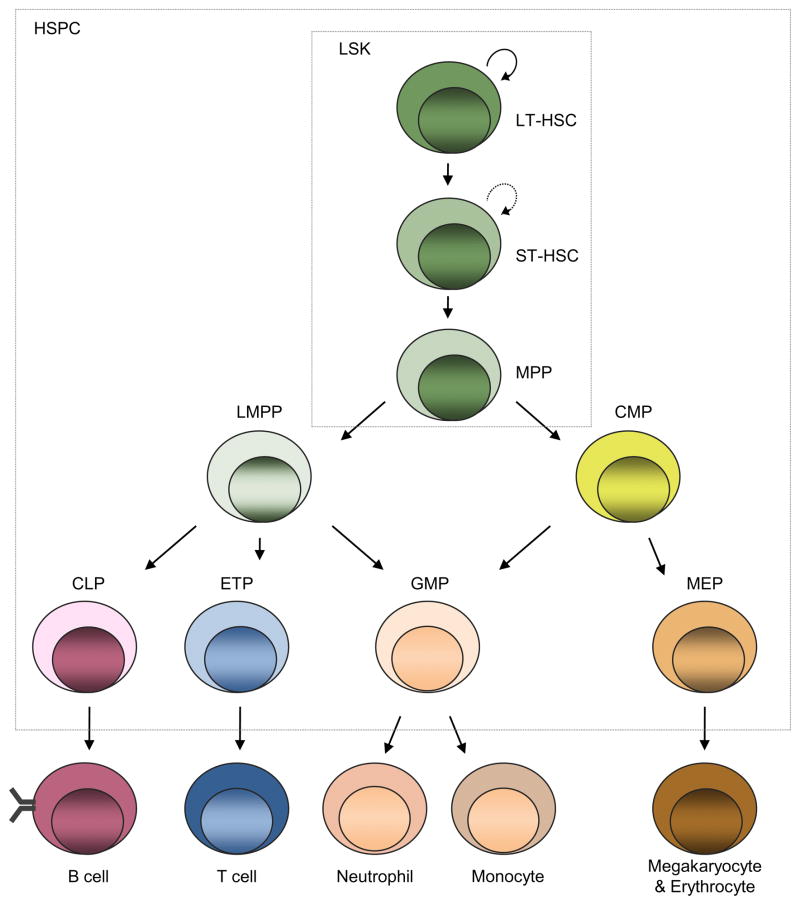Fig. 1.
Hematopoiesis. All blood cells arise from self-renewing hematopoietic stem cells that possess long-term reconstituting capabilities (LT-HSCs). During differentiation, LT-HSCs give rise to short-term reconstituting stem cells (ST-HSC) with limited self-renewal capabilities which, in turn, produce multipotent progenitors (MPPs) that retain multi-lineage differentiation capabilities but have little or no renewal activity. MPPs then become increasingly specified to the megakaryocyte/erythroid, myeloid, or lymphoid lineages. Lymphoid-myleoid primed multipotent progenitors (LMPPs) give rise to common lymphoid progenitor (CLPs) and early thymic progenitors (ETPs), precursors to the B and T lineages, as well as granulocyte–macrophage progenitors (GMPs). Common myeloid progenitors (CMPs) give rise to megakaryocyte/erythroid precursors (MEPs) as well as GMPs. LSKs (lineage−Sca1+c-kit+ cells) contain LT-HSC, ST-HSC and MPP subsets, while hematopoietic stem and progenitor cells (HSPCs) additionally include their immediate downstream progeny. This schematic represents hematopoietic development under homeostasis, and not all pathways may be obligate. For example, TLR4 ligation fosters rapid myeloid development independent of the usual requirement for the myeloid colony stimulating factors [35].

